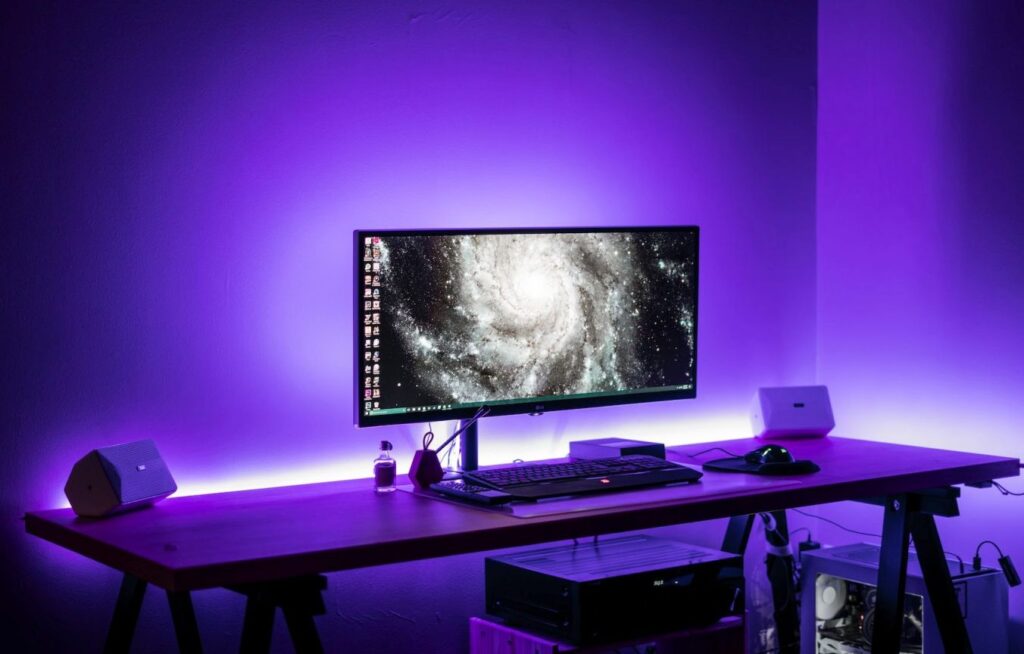Upscaling 1080P Monitor to 1440P: The Ultimate Guide

Upscaling a 1080P monitor to 1440P will result in a sharper and more detailed image. This is because a 1440P resolution has 78% more pixels than a 1080P resolution. The additional pixels will provide a clearer image and make text more legible. Upscaling to 1440P can also improve your gaming experience by providing better textures and more detailed environments. However, it is important to note that in order to fully benefit from the higher resolution, your computer’s hardware needs to be powerful enough to handle it. In this article, we will discuss the benefits of upscaling and the different methods available to do so, including using an Nvidia graphics card.
Upscaling 1080P Monitor to 1440P
Upscaling refers to the process of taking a lower resolution image or video and increasing its resolution to match a higher resolution display. In the case of a 1080P monitor being upscaled to 1440P, the image being displayed on the screen would have more pixels, resulting in a sharper, more detailed image.
Benefits of Upscaling
The main benefit of upscaling is that it can make images and videos appear to be of higher resolution, resulting in a more detailed and sharper image. This can be especially useful for older content that was not originally recorded in high resolution.
Monitor Basics
Refresh Rate and Resolution: A monitor’s resolution refers to the number of pixels that make up the image being displayed on the screen. The higher the resolution, the more pixels there are and the more detailed the image appears. Refresh rate, on the other hand, refers to the number of times per second that the image on the screen is updated. A higher refresh rate results in a smoother, more fluid image.
1080P to 1440P
Advantages for Gaming: For gamers, the main advantage of upscaling from 1080P to 1440P is that the image will be much more detailed, with more pixels to make up the image. This can make the gaming experience more immersive and can also help to improve overall image quality. Additionally, the extra pixels may help to reduce aliasing and other artifacts that can occur at lower resolutions.
System Requirements for 1440P Monitor
To properly run a 1440P monitor, your computer should have a powerful GPU with at least 2-4GB of VRAM, and it should be able to output the resolution at 60Hz (or higher refresh rate) and have a display port or HDMI 2.0 port that supports 1440P resolution. If your computer doesn’t meet these requirements, it may not be able to properly display the increased resolution and you may experience lag or other issues.
Factors to Consider Before Upscaling
Before upscaling your monitor, it is important to consider the overall quality of the content you will be viewing. If the content is not originally recorded in high resolution, upscaling it may not result in a significant improvement in image quality. Additionally, you will also want to make sure that your computer is powerful enough to properly run a 1440P monitor.
How to Upscale a 1080P Monitor
To upscale your monitor, you can change the resolution settings in your computer’s display settings. On Windows, right-click on your desktop, select “Display settings,” and then select “Resolution.” On a Mac, go to “System Preferences,” select “Displays,” and then select “Scaled.” Keep in mind that some applications or games may not support 1440P resolution, so you may have to change the resolution back to 1080P for those.
Evaluate Your Needs
It is important to evaluate your needs before upscaling to a 1440P monitor. Consider the types of content you will be viewing, the quality of that content, and the power of your computer. If you are mostly gaming and have a powerful PC, then upgrading to 1440P might be a good idea for better gaming experience. But if you’re just browsing the internet and watching videos, then upscaling might not be necessary, as the additional resolution might not be fully utilized.
Nvidia Upscaling 1080P to 4K
Nvidia has recently released a software feature to upscale content from 1080p to 4K, allowing users with a 1080p display to enjoy content in almost the same quality as 4K. With this new technology, Nvidia has revolutionized how people can watch movies and play games on their PCs. This new feature is called “Dynamic Upscaling” and it works by taking existing 1080p images and increasing their resolution four times over. By analyzing each frame individually, Dynamic Upscaling is able to detect details that would be lost when upscaled with traditional methods. This ensures that every image looks sharp and detailed, even when viewed at 4K resolutions. Additionally, Nvidia’s advanced algorithms also help eliminate any artifacts or blurriness so that the end product is indistinguishable from true 4K visuals.
Conclusion:
Upscaling your 1080P monitor to a higher resolution can greatly improve your viewing experience. Whether you choose to go for 1440P or 4K, you will be able to enjoy sharper and more detailed images. However, it is important to keep in mind that your computer’s hardware needs to be powerful enough to handle the higher resolution. Nvidia graphics cards offer a feature called Dynamic Super Resolution (DSR) that can be used to upscale to 4K, but even with this feature, a powerful computer is required to run 4K resolution smoothly. With these tips and insights, you can now make an informed decision on whether upscaling is right for you and enjoy better display on your monitor.